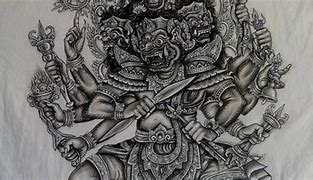
Slough: Exploring its Nature
Slough is a soft, yellow or white, stringy or thick substance, that overlays the wound bed. Composed of dead cells, fibrin, and other substances, it indicates an unclean or stagnant wound environment, hindering healing and increasing infection risks.
Eschar Found in Pressure Ulcers
Eschar commonly develops in pressure ulcers, which result from prolonged pressure on the skin, limiting blood flow and causing tissue damage. Eschar in pressure ulcers can hinder healing and requires specific attention to prevent infection and support recovery.
Eschar Treatment and Wound Care
Eschar vs. Slough: What is the Difference?
Understanding the differences between eschar and slough is essential for proper wound care and treatment. Healthcare professionals play a pivotal role in diagnosing, assessing, and implementing suitable treatments to address these types of wounds. With the right approach, including proper debridement and appropriate wound dressings, effective wound healing can be facilitated, leading to better outcomes and quality of life.
If you or someone you know has suffered a serious wound or have questions regarding the healing process, the specialized team at West Coast Wound Center can help. Book an appointment today.
Slough can be defined as “non-viable tissue of varying colour (e.g. cream, yellow, greyish or tan) that may be loose or firmly attached, slimy, stringy or fibrinous” (Haesler et al, 2022; International Wound Infection Institute [IWII], 2022). Slough consistency is determined by the tissue’s hydration status and interaction with the dressing material, as well as the depth and type of non-viable tissue (Wounds UK, 2013; Atkin, 2014).
Slough can be found in both acute wounds, such as dehisced surgical wounds, skin tears and other traumatic wounds and skin grafts, as well as in chronic wounds, such as diabetic foot ulcerse (DFUs) pressure ulcers and venous leg ulcers (Percival and Suleman, 2015).
A simple explanation of slough for patients is generally a “yellow/white layer of dead skin [tissue] in the wound, that can prevent or slow down healing” (Harding et al, 2020). Slough can be unpleasant and disturbing for the patient, and difficult to manage clinically as it prevents dressings and topical treatments from supporting the underlying viable tissues (Pritchard and Brown, 2013). Slough or necrotic tissue can promote bacterial growth and biofilm formation, inhibit the penetration of antibiotics, prevent the formation of granulation tissue, and subsequent re-epithelialisation, and interfere with wound contraction (Steed, 2004; Lewis et al, 2008; Ramundo and Gray, 2008).
The scale of the problemWhile slough is under-reported in the literature, it is known to be a feature of non-healing wounds (Pritchard and Brown, 2013). In the United Kingdom, Guest et al (2020) reported that there were an estimated 3.8 million patients with a wound managed by the NHS in 2017/18, of which 70% healed in the study year (89% and 49% of acute and chronic wounds healed, respectively); an estimated 59% of chronic wounds healed if there was no evidence of infection, compared to 45% if there was a definite or suspected infection.
In the United States, Medicare cost estimates for acute and chronic wound treatments range from $28.1 to $96.8 billion. The highest expenses are associated with surgical wounds, followed by DFUs, with a higher trend toward costs associated with outpatient wound care compared with inpatient (Sen, 2019). In Australia, DFUs approximately affect 50,000 people, costing healthcare systems an estimated $1.6 billion, and resulting in 28,000 hospital admissions and 5000 amputations each year (Chen et al, 2022). Increasing health care costs, an ageing population, recognition of difficult-to-treat infection threats, such as biofilms, and the continued threat of diabetes and obesity worldwide make chronic wounds a substantial clinical, social and economic challenge (Sen, 2019).
The impact of living with a wound carries a substantial personal cost and can have a significant effect on daily life and overall wellbeing (Moore et al, 2016). Individuals living with wounds report feeling unsupported and uninvolved in decisions about their care (Harding et al, 2020). This can lead to psychological issues, such as anxiety and depression (Wounds International, 2012).
Management of slough in practiceDebridement is regarded as an essential component of wound preparation and management (IWII, 2022) and is defined as “the removal of devitalised (non-viable) tissue from or adjacent to a wound”.Debridement promotes a stimulatory environment by removing and managing exudate, while also creating a window of opportunity where biofilm defences are temporarily interrupted, allowing for increased efficacy of topical and systemic management strategies (Wolcott et al, 2010; World Union of Wound Healing Societies [WUWHS] 2019; IWII, 2022).
Debridement should not be confused with wound cleansing, which is “actively removing surface contaminants, loose debris, non-attached non-viable tissue, microorganisms or remnants of previous dressings from the wound surface and its surrounding skin” (Haesler et al, 2022).
83%83% menganggap dokumen ini bermanfaat, Tandai dokumen ini sebagai bermanfaat
17%17% menganggap dokumen ini tidak bermanfaat, Tandai dokumen ini sebagai tidak bermanfaat
WARTABUANA – Sedikitnya empat orang tewas dan tiga lainnya luka-luka akibat serangan seekor beruang liar di Negara Bagian Chhattisgarh, India tengah, menurut keterangan petugas pada Senin (7/12).
Beruang itu menyerang mereka di sebuah hutan di Distrik Koriya, Chhattisgarh, sekitar 329 km sebelah utara Raipur, ibu kota negara bagian tersebut.
“Tadi malam seekor beruang liar menyerang orang-orang di dekat Desa Angwahi di bawah kawasan hutan Devgarh, menewaskan empat orang dan melukai tiga lainnya,” kata Satya Narayan Rathor, seorang pengumpul hasil hutan dari Distrik Koriya. “Jasad mereka telah dikirim untuk diautopsi dan korban luka-luka dirawat di rumah sakit.”
Menurut petugas, para korban berada di dalam hutan tersebut untuk mengambil hasil hutan. Setelah kejadian, tim petugas kehutanan dan polisi dikerahkan ke daerah itu untuk mengusir beruang liar tersebut.
Serangan itu telah menimbulkan kepanikan di antara warga sekitar. Petugas margasatwa mengatakan kehadiran manusia di dalam kawasan hutan membuat beruang merasa tidak aman, yang kemudian memicu mereka untuk menyerang manusia. Kadang-kadang, hewan ini diserang oleh penduduk desa yang ketakutan sebagai pembalasan yang juga terbukti fatal bagi mereka.
India memiliki undang-undang yang melarang pembunuhan hewan liar. Menurut para pakar margasatwa, urbanisasi massal, penggundulan hutan, perambahan kawasan hutan, hilangnya zona penyangga di hutan, dan ekstraksi tanaman obat menjadi beberapa alasan meningkatnya konflik antara manusia dan hewan.
Setiap tahun, banyak orang tewas atau terluka dalam konflik manusia-hewan yang semakin intens di seluruh India. [xinhua]
Best Type of Wound Dressing When Dealing with Eschar
Choosing appropriate wound dressings when dealing with eschar is crucial. Dressings that maintain a moist wound environment while facilitating the removal of excess exudate are typically preferred. Wound specialists may recommend hydrogels, hydrocolloids, or specific foams depending on your circumstances to aid in its removal and promote healing.
JAKARTA - Dua pria yang sedang berburu di Wyoming, Amerika Serikat diserang dan terluka dalam serangan 'mendadak dan mengejutkan' oleh beruang grizzly selama akhir pekan, kata pejabat.
Kedua pria itu diangkut ke rumah sakit setempat, salah satunya dengan helikopter, setelah serangan Sabtu sore, kata Wyoming Game and Fish Department dalam sebuah pernyataan tertulis. Tidak ada kabar lebih lanjut tentang kondisi mereka.
"Berdasarkan informasi awal, ini tampaknya merupakan pertemuan mendadak dan mengejutkan dengan beruang grizzly," kata departemen tersebut, seperti melansir Reuters 18 Oktober.
Orang-orang itu sedang berburu dan berekreasi di Hutan Nasional Shoshone, selatan Cody, ketika beruang menerkam mereka dalam perlindungan, menurut departemen tersebut.
Diketahui, pemilik tanah dan pemburu di wilayah tersebut telah melaporkan peningkatan aktivitas beruang baru-baru ini di ketinggian rendah, mendorong pejabat satwa liar untuk memperingatkan agar pengunjung berhati-hati.
"Ini adalah situasi yang menyedihkan dan tidak menguntungkan, kami berharap kedua korban pulih sepenuhnya dan cepat," ujar Dan Smith, pengawas regional untuk Wyoming Game and Fish Department.
The process of wound healing often involves diverse tissue formations, with eschar and slough representing crucial stages in the recovery journey. Eschar and slough are terms frequently used in the context of wound healing, representing distinct stages and compositions. Proper comprehension of these stages can play an imperative role in effective wound care and treatment.
Eschar, a hardened, dry, black or brown dead tissue, forms a scab-like covering over deep wounds, such as severe burns or ulcers. It acts as a protective barrier but can impede healing, necessitating appropriate management and removal for optimal recovery.
While both eschar and scabs are composed of dried blood and fluids, they differ significantly. Scabs, typically in minor cuts, are soft and aid in healing. In contrast, eschar forms in deeper wounds, firmly attaching to the wound bed and often requiring medical intervention from a wound care specialist for removal.
How Long Can it Take For Eschar to Heal
The healing time for eschar varies based on factors such as wound size, depth, health conditions, and the body’s healing capacity. Proper management and removal of eschar play a crucial role in initiating the healing process, which can take weeks to months for complete recovery.























